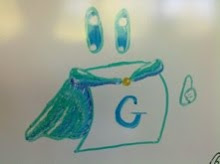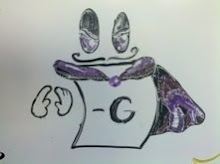I added a section in the sidebar for upcoming CGT events. Here's some info about 2013 events:
At Dalhousie University in Halifax, Nova Scotia (Canada), the CMS will hold their
summer meeting June 4 - 7.
Richard Nowakowski and
Paul Ottaway are organizing a special session on CGT as part of the meeting. There will be more information coming about that.
Also, if the pattern of odd-numbered years continues, Integers 2013 will
take place this fall. I saw dates for October 24-27, but that is from a
second-hand source.
Our department was lucky enough to host a talk about games (not by me). On Monday, we had Lynne Yengülalp from the University of Dayton speak about infinite-turn topological games. The starting position of the game is a topological space. For both players, a move consists of choosing a non-empty, open (not strictly proper) subset of the previous position.
Even though the move options are the same, the game is strictly partisan: the two players, NOT-EMPTY and EMPTY, have different goals. If the result of the infinitely-long game is the empty set, then the EMPTY player wins. Otherwise, the NOT-EMPTY player wins. This is a bit unintuitive at first, but if you consider the infinite sequence of open sets chosen in accordance with each player's strategy, then it can be the case that the infinite intersection is empty.
Lynne showed an even more unintuitive result for the real line where the NON-EMPTY player loses if they always choose the "biggest" set they can: namely the last position. Instead, they win if each time they choose any proper open set contained within a closed subset of the last move.
I don't know much about infinite games, but I'm pretty sure this is still combinatorial. Either way, it's an excellent application of topology to games!


